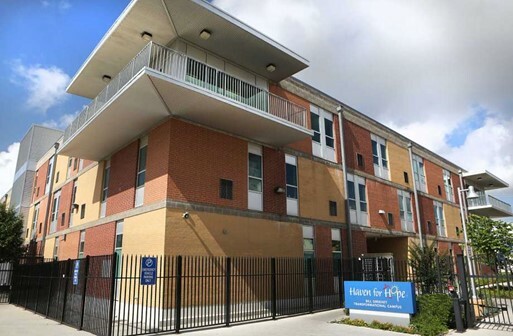Across the country we have seen states dropping policies that have failed to address the root causes of homelessness. For instance, San Fransisco has begun to hold people seeking services accountable by requiring drug tests and Philadelphia has banned “safe” injection sites. Even cities in Texas are beginning to question their current approaches and are starting to understand why homelessness is increasing despite the millions of dollars being poured into low-barrier housing. Texas mayors are also seeking alternatives to the Housing First model, in which “the homeless receive housing for life as the ‘solution’ to the often very complex challenges they are facing.” As an alternative, some are turning to the model based on the Transformational Campus located at Haven for Hope in San Antonio.
Haven for Hope is an umbrella organization which oversees the cooperation of several Non-Governmental Organizations, private interests, Bexar County, and the city of San Antonio to tackle their community’s homelessness crisis. It is located in the heart of San Antonio and is the culmination of philanthropy, community support, and a little bit of luck. It operates as nonprofit 501(c)3 and was founded by Bill Greehey, a civic and business leader who clearly placed importance on service to the community. The campus became fully operational in 2010 and has been servicing the Bexar County community ever since.
Recently, I had the pleasure of touring Haven for Hope’s Transformational Campus and was impressed with the experience. The purpose of the Transformational Campus is to address the root causes of homelessness so as to ensure a successful transition to self-sufficiency.
The campus resembles a small town’s main street that has access to several amenities. It contains a mail room and its own bank. A kennel is located on site so that people do not have to decide between keeping their pet or taking steps to improve their lives. A cafeteria converted from an HEB warehouse is manned by a combination of volunteers and staff to serve meals to residents. Dorms for females and families are located on separate ends of the campus as safety is the number one concern for the residents. There is also a non-denominational chapel which accommodates people of every faith. There is even a daycare center for pre-k children with an adjacent playground donated by the YMCA. The administration building contains the staff and services that help the residents of this community. There are case workers that help design a path forward for residents. This can include earning a GED, substance abuse and mental health counseling, financial coaching, professionalism and job training, and many other services designed to help ensure self-sufficiency once they graduate their program and move into permanent housing.
Haven for Hope has had a tremendous positive impact on San Antonio. As the city’s the largest provider of homeless services, it houses 50% of San Antonio’s homeless population every day, including 1,600 unduplicated individuals. Since opening, the point in time count for the homeless in the downtown San Antonio area decreased by 77%. The Restoration Center associated with Haven for Hope has been an alternative to jail for intoxicated people, those under emergency detention or injured prisoners in need of medical attention. Having these services on their campus has saved jails, emergency rooms and courts $96 million, reducing arrests and emergency room visits. By reducing arrests and allowing police to concentrate on more serious emergencies, the San Antonio PD has saved $2 million.
Just as important, if not more so, is how effective the services provided are to the individuals who seek shelter there. Haven for Hope prides itself on the fact that most people who come to stay graduated through their programs and transitioned into permanent housing after four months. Ninety-one percent of Haven graduates have been able to retain housing for a year after leaving. Five hundred individuals per year, on average, have gained employment through Haven and earn an average of $13.56 an hour.
Haven for Hope is a prime example of how the compassion and charity of the community can be effective when it comes to addressing homelessness. Many detractors say that requiring people to go through drug treatment and mental health counseling is too high a barrier. However, it is the case in many cities that low barrier housing units purchased with taxpayer dollars remain empty. Cities across the country a losing faith in policies like low barrier housing and are looking for alternatives that address the root cause of homelessness. Haven for Hope is able to serve the homeless community with a method that concentrates on human dignity.


